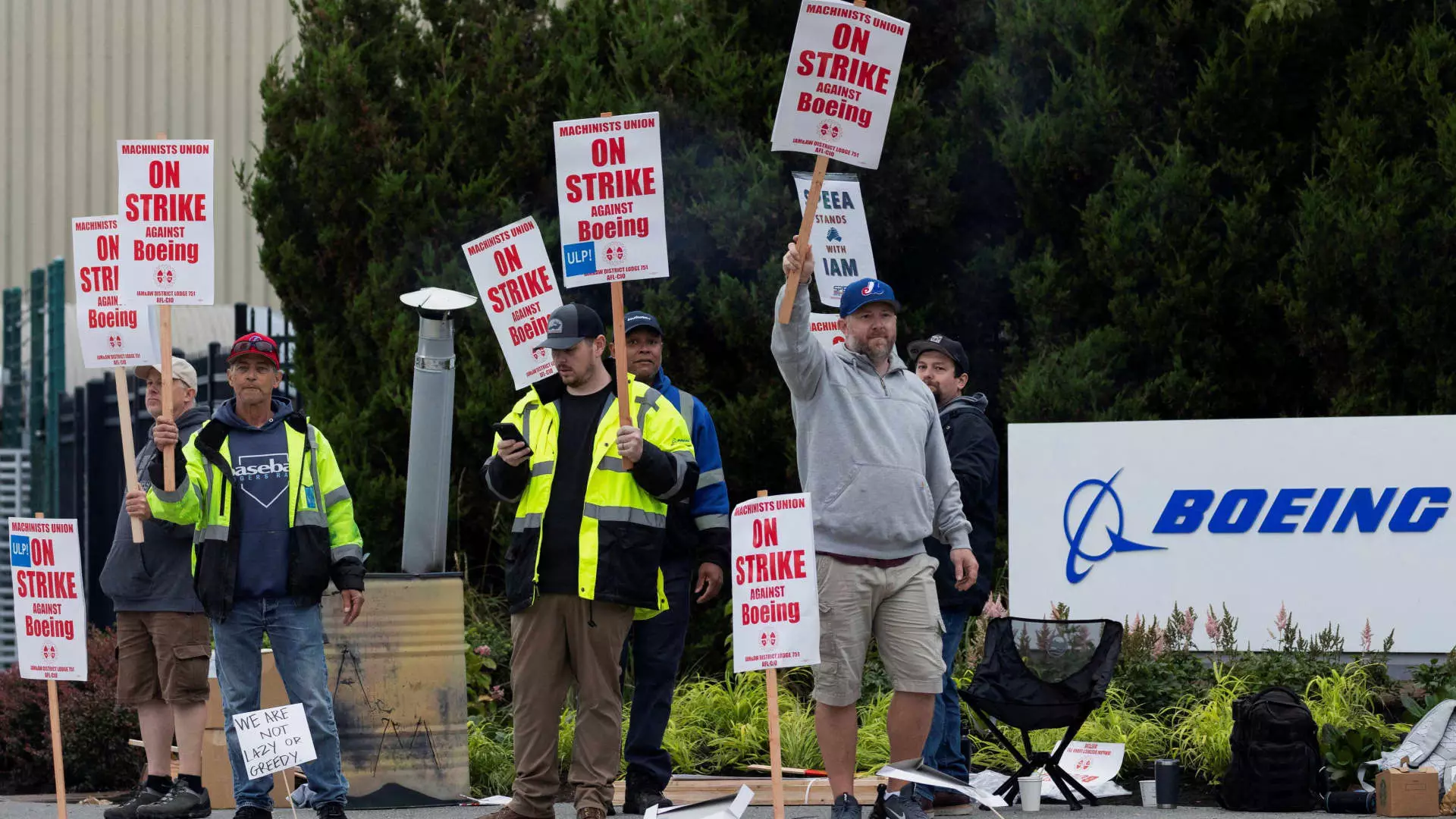In September 2023, Boeing’s production facilities in the Pacific Northwest were engulfed in chaos as more than 30,000 machinists walked off the job. This unprecedented strike, initiated on the night of September 13, stemmed from a critical rejection of a tentative labor agreement that union members deemed inadequate. As the aerospace giant grapples with severe financial pressures, mounting worker discontent is thrusting Boeing into a precarious position—one characterized by the need for a quick resolution juxtaposed with the harsh realities of labor negotiations.
The Financial Implications of the Strike
With estimates indicating the strike is costing Boeing around $50 million daily, the urgency of negotiations cannot be overstated. The company, now burdened by over $60 billion in debt, is already facing deteriorating ratings from financial institutions. A prolonged strike threatens not only to deplete the company’s resources even further but also risks a downgrade that would escalate its borrowing costs. The financial turmoil follows a catastrophic incident earlier in the year involving its 737 Max planes, which has already led to substantial losses totaling approximately $8 billion.
Such figures paint a bleak picture for Boeing’s future, especially considering that it has not turned a profit since 2018. The new CEO, Kelly Ortberg, who took the helm amidst these issues, is now tasked with reviving the company’s tarnished reputation while staving off the negative effects of the current labor crisis.
The Voices Behind the Strike
Amid the picket lines, machinists are not just protesting for better wages; they are advocating for a sustainable future in a region characterized by a soaring cost of living. The median home price in Washington state has surged approximately 142% over the past decade, which has severely impacted workers’ financial stability. Machinists like Jake Meyer are resorting to side jobs to stay afloat, indicating a willingness to sacrifice personal time for financial survival while maintaining pride in their craftsmanship. Such sentiments illustrate the harsh reality many workers face as they balance their passion for their jobs with economic pressures.
Meanwhile, the Union remains proactive, providing essentials like water and food for picketing workers, displaying solidarity in their collective struggle. This community effort highlights the emotional resilience of those involved; while machinery and financial forecasts dominate headlines, the human element—the experiences of loyal employees—is often sidelined.
Negotiations between Boeing and the International Association of Machinists and Aerospace Workers have proven challenging. Although a recent offer outlined wage increases of 25% over four years, workers are standing firm on their demands, which include a more substantial 40% hike alongside enhanced job security measures, such as the restoration of pensions lost over a decade ago. This impasse reflects not only the employees’ urgent need for adequate compensation but also a collective memory of past concessions made during the 2008 strike.
As talks stagnate, both parties seem trapped in a cycle of disappointment. Ortberg expressed a commitment to addressing workers’ needs, but many machinists and union representatives have openly voiced frustration over the perceived lack of genuine progress. The dynamic performance of labor and management has become a focal point for the company’s future stability.
This labor dispute is part of a larger trend of worker mobilization across various industries. From autoworkers to airline employees, many unions have successfully negotiated better wages and working conditions, inspired by a labor market that increasingly favors skilled workers. The current political climate, with the Biden administration encouraging mutually beneficial agreements, amplifies this urgency. Transportation Secretary Pete Buttigieg’s remarks reinforce the notion that a resolution is not just necessary for workers but crucial for Boeing to navigate its multifaceted crises.
However, the challenges for Boeing remain significant. Skilled labor in sectors such as aerospace is scarce, and any disruption in the workforce can have long-lasting repercussions, complicating production timelines and exacerbating financial woes. Previous strikes taught the industry that retaining and training skilled workers is not a luxury, but a necessity.
As Boeing faces the ramifications of the machinist strike, the path forward appears fraught with uncertainty. The need for fair wages and working conditions pits a beleaguered workforce against a struggling corporate entity. The outcomes of these negotiations will not only dictate Boeing’s immediate operational capacity but will also shape its long-term viability in a competitive market. As the strike continues and the stakes rise, both sides must navigate their differences to emerge from this conflict sustainably—both for the workers and for the company that once represented the pinnacle of American engineering.

